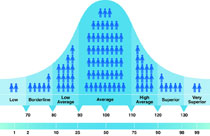Play It Again Sam – Looking Through HR’s Crystal Ball – Prediction Four of Nine – Corporate Learning
 In the January/February issue of HR Magazine, Josh Bersin with Deloitte, makes nine predictions of “what’s in store for HR in 2015.” This is part three of a series of articles looking at each of these predictions.Training is another topic with a repeatable tune. However, training often doesn’t get much “air time” as it’s neglected entirely or the first thing to go when the bottom line gets out of tune with profits. In addition, the debate about its value plays like a broken record. But just like the title to Bob Dylan’s song, “The Times They are A-Changin’”
In the January/February issue of HR Magazine, Josh Bersin with Deloitte, makes nine predictions of “what’s in store for HR in 2015.” This is part three of a series of articles looking at each of these predictions.Training is another topic with a repeatable tune. However, training often doesn’t get much “air time” as it’s neglected entirely or the first thing to go when the bottom line gets out of tune with profits. In addition, the debate about its value plays like a broken record. But just like the title to Bob Dylan’s song, “The Times They are A-Changin’”
Gone are the days when you went to a training class, listening to the corporate trainer pouring the annual mandatory topic into your brain, while you sat there and passively soaked it in only for it to be forgotten the next day. According to an unscientific poll taken at ATD (formerly ASTD) Techknowledge 2015 on the top concerns in corporate leaning, the melody plays out this way:
Employee engagement 26%
Increasing speed to employee productivity 23%
Tracking quality of learning programs 18%
Personalized learning paths for all employees 17%
Leadership development 16%
According to Deloitte, the concerns around corporate learning are of a different tune and it’s a song that’s being played more and more and its title is technology. A study by Erik Brynjolfson of MIT suggest that due to technology, half of the jobs HR must fill today won’t even be around.in 10 years. Further, jobs are becoming more and more specialized. It doesn’t take a rocket scientist to discern that corporate learning or training, as it used to be called, must change with the times.
Another concern is collaborative learning. According to a study with a limited number of participants, not only is collaborative learning growing, but the way to do it is changing as well. Technology, or social learning, is making that more and more possible and affordable. Not only is it affordable, social learning can increase revenues by twice as opposed to organizations that do not use it, according to a study by Human Capital Management. The technology, in turn, spurns another concern. Which technical tools are best for collaborative learning? The top six tools are:

 In the January/February issue of HR Magazine, Josh Bersin with Deloitte, makes nine predictions of “what’s in store for HR in 2015.” This is part one of a series of articles looking at each of these predictions.
In the January/February issue of HR Magazine, Josh Bersin with Deloitte, makes nine predictions of “what’s in store for HR in 2015.” This is part one of a series of articles looking at each of these predictions. In the January/February issue of HR Magazine, Josh Bersin with Deloitte, makes nine predictions of “what’s in store for HR in 2015.” Many of the nine predictions are ongoing hang-overs (pun intended) and
In the January/February issue of HR Magazine, Josh Bersin with Deloitte, makes nine predictions of “what’s in store for HR in 2015.” Many of the nine predictions are ongoing hang-overs (pun intended) and others do have some interesting twists and are the result of a world that continues to spin ever forward on the back of technology, data, and diversity. This will be the first in a series of articles looking at each of these predictions.
others do have some interesting twists and are the result of a world that continues to spin ever forward on the back of technology, data, and diversity. This will be the first in a series of articles looking at each of these predictions. There are several reasons to evaluate the validity and ROI of a coaching program.
There are several reasons to evaluate the validity and ROI of a coaching program. The sales process is changing from one of being process driven to one of relying on the insight and judgment of the sales representative. Why is this? Today’s customers can now find their own information about products, pricing, quality, and service levels for any industry or product. In other words, the customer is relying less on the sales person to “sell” them on the benefits of goods and services. More than likely, the customer has already sold themselves before they ever enter a store, showroom or sales event. Therefore, the sales professional requires less adherence to protocols, inspection, direction, and structure. What is needed is more guidance and support from managers. This fact alone demands a coaching platform. There are, however, considerations to examine.
The sales process is changing from one of being process driven to one of relying on the insight and judgment of the sales representative. Why is this? Today’s customers can now find their own information about products, pricing, quality, and service levels for any industry or product. In other words, the customer is relying less on the sales person to “sell” them on the benefits of goods and services. More than likely, the customer has already sold themselves before they ever enter a store, showroom or sales event. Therefore, the sales professional requires less adherence to protocols, inspection, direction, and structure. What is needed is more guidance and support from managers. This fact alone demands a coaching platform. There are, however, considerations to examine. Once I had a boss who said there are three types of employees, the work horses, the non-consistent employee (these are the ones who on any given day, may perform well one day and poorly the next – it’s a toss of the coin), and finally there are the dead wood employees.
Once I had a boss who said there are three types of employees, the work horses, the non-consistent employee (these are the ones who on any given day, may perform well one day and poorly the next – it’s a toss of the coin), and finally there are the dead wood employees. There is a lot of rhetoric out there about finding people with the right combination of knowledge, skills, and attributes or KSAs, and then understanding how particular sets of KSAs need to work together to complete projects. Part of the confusion centers around finding these mixes of talent. Do these people come from the recruiting process, are they people within the organization whom we can train, or are there people on other teams within the organization who might have a skill mismatch and would perform brilliantly on another project?
There is a lot of rhetoric out there about finding people with the right combination of knowledge, skills, and attributes or KSAs, and then understanding how particular sets of KSAs need to work together to complete projects. Part of the confusion centers around finding these mixes of talent. Do these people come from the recruiting process, are they people within the organization whom we can train, or are there people on other teams within the organization who might have a skill mismatch and would perform brilliantly on another project?